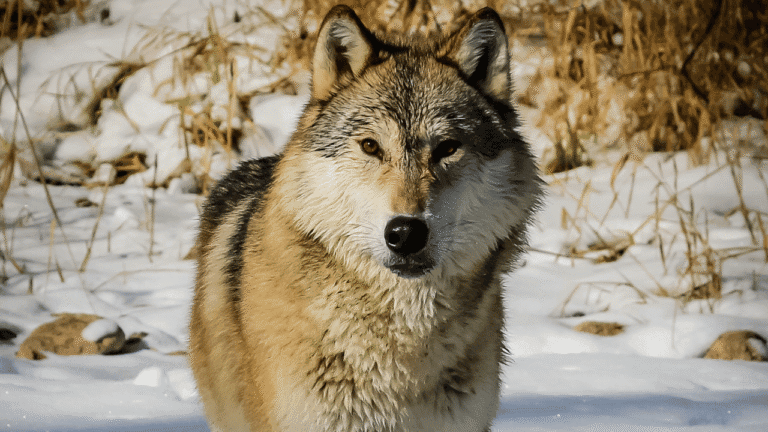Earth’s Whisper Exploring Indigenous Meditation traditions Practices

Indigenous Meditation Traditions Mindfulness, like the air itself, crosses boundaries of place and time, culture and community. Indigenous meditation practices are deeply rooted in native cultures and offer a unique perspective on spirituality and well-being. In this article, we will explore the rich traditions of Indigenous meditation, including Native American practices, Shamanic techniques, and traditional tribal rituals. These practices offer a profound connection to nature, community, and the self, promoting healing and mindfulness in a holistic way.
Key Takeaways:
- Indigenous meditation traditions bring a unique perspective to spirituality and well-being.
- Native American meditation practices, Shamanic techniques, and traditional tribal rituals are part of Indigenous meditation traditions.
- These practices foster a deep connection with nature, community, and the self.
- Indigenous meditation promotes healing and mindfulness in a holistic way.
- Exploring Indigenous meditation can expand our understanding of meditation and foster a deeper connection with ourselves and the world around us.
The Wisdom of Indigenous Teachers: Jeanne Corrigal and Métis Meditation
In the realm of Indigenous Meditation Traditions, Jeanne Corrigal stands as a guiding light. As a Canadian Métis, she brings her deep understanding and reverence for her Indigenous heritage into her meditation practice. Guiding the Saskatoon Insight Meditation Community, Corrigal leads weekly meditation sits and imparts her knowledge through courses on Indigenous Presence and Unwinding Whiteness. For Corrigal, mindfulness is intrinsically intertwined with her Indigenous identity, representing a profound connection to the world.
Corrigal emphasizes the significance of nature, listening, and mindfulness as core tenets of her practice. She believes that Indigenous teachings bring a unique perspective to the practice of mindfulness. It is about being present, connected, and aware of one’s surroundings. Through her teachings, Corrigal encourages individuals to explore the wisdom of Indigenous cultures and develop a deeper understanding of themselves and their place in the world.
“Mindfulness is an Indigenous teaching. It is about being in connection with this world.”
Corrigal’s journey in the realm of Indigenous Meditation Traditions led her to play a pivotal role in organizing the first Indigenous Peoples Retreat at the Insight Meditation Society. By bringing together Indigenous practitioners and providing a space for their voices to be heard, the retreat showcased the power and significance of Indigenous mindfulness practices. Corrigal’s efforts not only enriched the meditation community but also fostered a collaborative environment for cross-cultural learning and understanding.
Indigenous Meditation Among the Fort Sill Apache: Jeff Haozous’ Transformation
Jeff Haozous, a member of the Fort Sill Apache tribe, discovered the power of mindfulness during his time as the tribe’s chair. Despite facing initial challenges, he turned to mindfulness as a valuable tool to navigate tense council meetings and personal worries, finding solace and clarity in the present moment.
After stepping down from his political position, Haozous felt a deep calling to delve deeper into mindfulness practice. Recognizing the potential for healing within Native communities, particularly those affected by intergenerational trauma caused by colonization, he committed himself to becoming a meditation teacher and retreat leader.
Haozous firmly believes that mindfulness can serve as a catalyst for personal sovereignty and the decolonization of the mind. Through his own transformational journey, he has experienced the empowering effects of mindfulness practice on an individual and collective level.
“Mindfulness has allowed me to reclaim my personal sovereignty and connect with the wisdom of my ancestors. It is a pathway to healing and resilience for our people.”
With a passionate vision, Haozous now plans to share his teachings and create a dedicated space for Indigenous mindfulness in the Southwest. He aims to honor the ancient wisdom of his tribe and connect it with contemporary mindfulness practices, bridging the gap between the past and the present.
Image:
The Impact of Mindfulness on Intergenerational Trauma
“Mindfulness provides a profound opportunity to address intergenerational trauma. By cultivating awareness and compassion, we can break free from the cycle of pain and create a path towards healing.”
For Native communities, the effects of intergenerational trauma are deeply felt. Colonialism, forced assimilation, and the loss of cultural practices have had a lasting impact on generations. However, Haozous firmly believes that mindfulness offers a pathway to healing and resilience.
Mindfulness practice allows individuals and communities to confront their pain with compassion, acknowledging the past while embracing the present. By fostering a deep connection to the self and the natural world, Indigenous mindfulness traditions have the potential to transform lives and restore a sense of balance and harmony.
Embracing Personal Sovereignty Through Mindfulness
Haozous views mindfulness as a means to reclaim personal sovereignty and empower individuals to lead lives aligned with their true essence.
Through the practice of mindfulness, one can awaken to the present moment, cultivating a sense of agency and ownership over their thoughts, emotions, and actions. By embracing personal sovereignty, individuals can break free from external influences and tap into their inner wisdom, affirming their inherent rights and dignity.
This journey of self-discovery fosters a deep sense of empowerment and strengthens resilience, allowing individuals to navigate life’s challenges from a place of authenticity and personal authority.
The Indigenous Mindfulness Movement
The transformational journey of individuals like Jeff Haozous is part of a broader movement within Indigenous communities to reclaim and revitalize traditional practices. Indigenous mindfulness is not a standalone concept but rather an integral part of a spiritual and cultural heritage.
As Indigenous communities seek to heal from historical trauma and assert their cultural identity, mindfulness practices that honor ancestral wisdom become instrumental. By incorporating Indigenous mindfulness into their daily lives, individuals can nurture their connection to the land, ancestors, and community, finding solace and strength in their roots.
Indigenous Meditation Traditions Among Native American Tribes
| Tribal Nation | Specific Meditation Practice |
|---|---|
| Lakota Sioux | Vision Quests |
| Navajo | Singing and Chanting |
| Hopi | Maze Meditation |
| Ojibwe | Dream Work Meditation |
| Choctaw | Walking Meditation |
Indigenous Meditation Traditions The Spiritual Practices of Native American Meditation
In Native American cultures, spirituality is deeply connected to the natural world. Native Americans view animals, trees, and the Earth itself as sacred entities. Animals are seen as teachers and guides in meditation, offering wisdom and spiritual messages. Native American meditation practices aim to transcend the material world and gain divine wisdom through meditation. Smudging, a ritual of cleansing and purifying the sacred space before meditation, is also a common practice. The interconnection of all living beings and the importance of paying attention to the natural world are central themes in Native American meditation.
Native American spirituality emphasizes the bond between humans and nature. The belief in the interconnectedness of all living beings guides their meditation practices. By grounding themselves in nature and aligning with the elements, Native Americans seek a deeper understanding of their place in the universe.
During meditation, Native Americans often invoke the spirits of animals and seek their guidance. Animals are revered as spiritual messengers and symbols of power. By connecting with the essence of these animals, practitioners hope to gain wisdom, clarity, and a deeper connection to their own spiritual nature.
“The earth does not belong to us. We belong to the earth.” – Chief Seattle
The practice of smudging is an integral part of Native American meditation. It involves burning sacred herbs, such as sage or cedar, to cleanse the energy of the space and the practitioner. Smudging is believed to remove negative energy and create a purer environment for meditation, allowing for a deeper spiritual connection.
The teachings and practices of Native American meditation remind us of the profound connection between spirituality and the natural world. By embracing these traditions, we can cultivate a deeper appreciation for nature, gain spiritual insight, and foster a greater sense of harmony with ourselves and the world around us.
Key Elements of Native American Meditation Practices
- Connection to nature and reverence for the Earth
- Animal symbolism and guidance
- Transcending the material world through meditation
- Rituals such as smudging for purification
- Interconnection of all living beings
Indigenous Mindfulness Practices from Around the World
Indigenous mindfulness practices reflect the diverse cultures from which they originate. While each practice has its unique characteristics, they share a common thread of connecting with nature and spirituality. Let’s explore some of these rich traditions:
Medicine Wheel Meditation
The Medicine Wheel, a powerful symbol used by numerous North American indigenous groups, represents health, healing, and balance. It consists of a circular arrangement of stones, each representing a different aspect of life. Practitioners use the Medicine Wheel as a guide for meditation, focusing on the interconnectedness of all aspects of being.
Totem Meditation
Totem meditation utilizes animal symbolism to access wisdom and guidance. Practitioners connect with the spiritual energy and characteristics associated with various animals. By meditating on specific totems, individuals can tap into the innate wisdom and teachings of these creatures, gaining insight and inspiration.
Drumming
Drumming is a traditional meditation practice widely embraced by Indigenous peoples. The rhythmic beats of the drum help induce a meditative state, promoting relaxation and increasing intuition. Drumming can be a communal activity, creating a collective energy and a sense of interconnectedness with others.
Native American Flute
The haunting melodies of the Native American flute have long been used as a tool for emotional breakthroughs and soulful healing. The soothing tones produced by this traditional instrument create an atmosphere conducive to meditation and introspection. The Native American flute can evoke deep emotions and facilitate a profound connection with oneself and the natural world.
Indigenous mindfulness practices highlight the richness and diversity of Indigenous meditation traditions, emphasizing the importance of connecting with nature, seeking balance, and nurturing the spiritual self.
These practices provide valuable insights into the interconnectedness of all beings and the profound wisdom that can be gained through Indigenous meditation. They offer unique avenues for achieving mindfulness, promoting holistic well-being, and cultivating a deeper understanding of ourselves and the world around us.
| Indigenous Mindfulness Practices | Key Characteristics |
|---|---|
| Medicine Wheel Meditation | Focuses on health, healing, and balance through a circular arrangement of stones symbolizing different aspects of life. |
| Totem Meditation | Utilizes animal symbolism to receive wisdom and guidance, connecting with the spiritual energy of various animals. |
| Drumming | Induces a meditative state through rhythmic beats, fostering relaxation, increased intuition, and community connection. |
| Native American Flute | Employs soothing melodies to facilitate emotional breakthroughs, soulful healing, and a deep connection with oneself and nature. |
Conclusion
Indigenous Meditation Traditions have a profound significance in promoting holistic well-being. These ancient practices offer a unique perspective on spirituality, emphasizing the connection between humanity and the natural world. By embracing the wisdom of Indigenous teachers and immersing ourselves in diverse cultural practices, we can deepen our understanding of meditation and foster a profound connection with ourselves and the world around us.
Indigenous meditation traditions remind us of the importance of embracing diversity and recognizing the interconnection of all beings. Through these traditions, we learn to cultivate mindfulness, promote healing, and find balance in our lives. The wisdom passed down by Indigenous teachers allows us to integrate the profound teachings of nature and community into our daily meditation practice, thus enhancing our overall well-being.
As we explore Indigenous meditation traditions, we are reminded of the power of embracing diverse perspectives and honoring the wisdom of different cultures. These traditions serve as a profound reminder of the interconnectedness of all beings and the importance of living in harmony with nature. By incorporating Indigenous meditation practices into our daily lives, we can achieve holistic well-being and deepen our connection with the world and ourselves.














